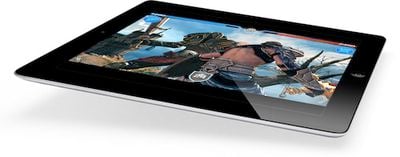While reading through Steve Jobs' biography, we discovered a number of interesting behind-the-scenes facts related to the development of the iPad.

When Steve Jobs was first hammering out the concept for the iPad, Jonathan Ive created a large number of mockup designs in order to figure out the right size and aspect ratio. Apple ultimately decided to go with a 9.7" screen at a 4:3 aspect ratio, but not without trying many other variations:
The process began with Jobs and Ive figuring out the right screen size. They had twenty models -- all rounded rectangles, of course -- in slightly varying sizes and aspect ratios. Ive laid them out on a table in the design studio, and in the afternoon they would lift the velvet cloth hiding them and play with them. That's how we nailed what the screen size was," Ive said
There have been persistent rumors that Apple had been developing a 7" iPad. It seems possible that that size was a runner-up choice that made it to late prototypes before Apple ultimately decided on the 9.7" model.
As for the processor being an ARM chip, Jobs had initially planned on using Intel's low-voltage Atom chip, even though the iPhone used an ARM chip. Tony Fadell successfully argued for ARM, even threatening to resign over the issue.
Much of the initial press reaction to the iPad was negative, which both "annoyed and depressed" Steve Jobs on the evening after the launch. Jobs says he received 800 emails that day -- many of them complaints.
 As usual, Jobs was intimately involved in the television advertising for the iPad, but he wasn't happy with initial options so the ad agency came back with a number of others. One of the proposed TV ads for the iPad used actor Michael Cera "wandering through a fake house making funny comments about the way people could use iPads."
As usual, Jobs was intimately involved in the television advertising for the iPad, but he wasn't happy with initial options so the ad agency came back with a number of others. One of the proposed TV ads for the iPad used actor Michael Cera "wandering through a fake house making funny comments about the way people could use iPads."
Finally, Jobs thought the iPad could revolutionize the textbook industry, and had considered a plan to include textbooks as a feature on the iPad.
"His idea was to hire great textbook writers to create digital versions, and make them a feature of the iPad. In addition, he held meetings with major publishers, such as Pearson Education, about partnering with Apple."
He specifically wanted to make textbooks free and bundled with the iPad, and such a system would give states the opportunity to save money during the slow economy.























